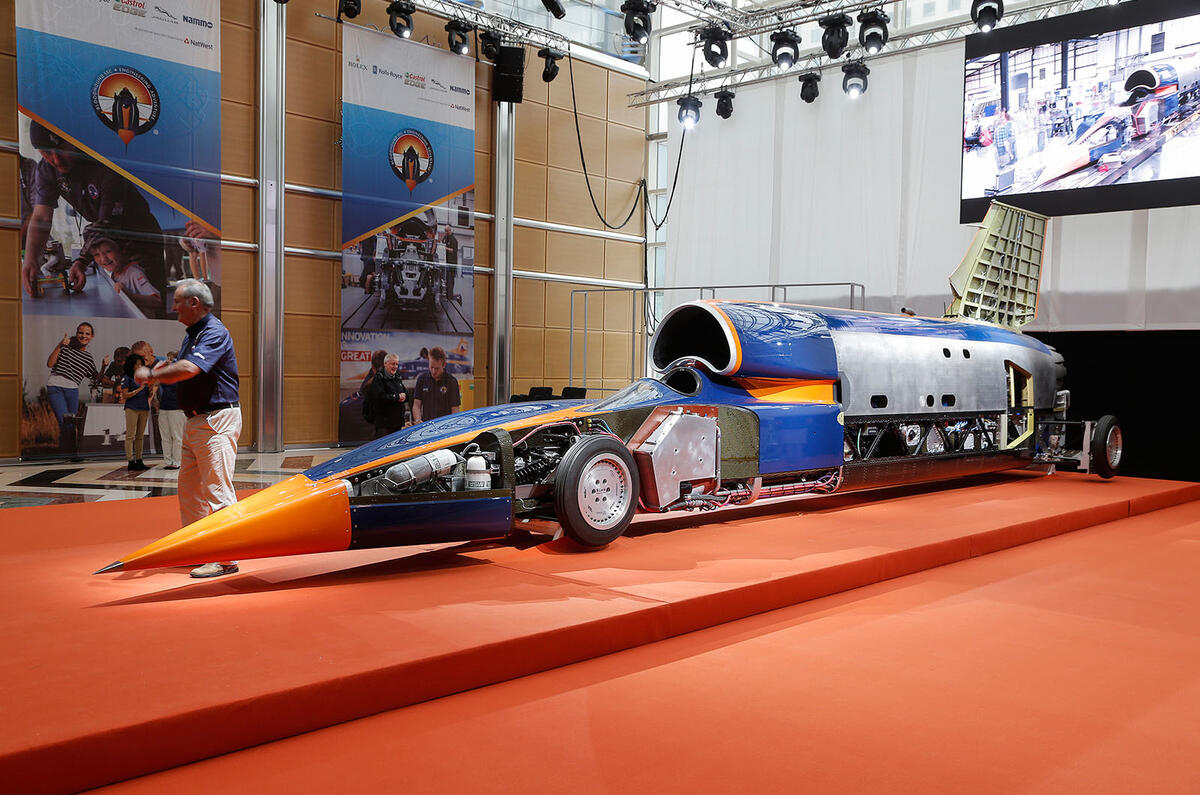The numbers behind the Bloodhound SSC car are astonishing. First and foremost, there’s its power output. Together, its Eurofighter Typhoon jet engine, hybrid rocket and Jaguar supercharged V8 motors are rated at 133,151bhp.
To put that in context, it’s the equivalent of 111 Bugatti Veyron Super Sports (each with 1200bhp), 135 McLaren P1 GTRs (each with 986bhp) or even 1345 Ford Focus’s (each with 99bhp).
Not only that, getting Bloodhound from 0-1000mph will take just 55 seconds and if it were to be released pointing straight up, it would reach 25,000 feet before crashing back down to earth. Incredibly, the whole run will be over in two minutes flat.
And then, of course, there’s the speed. In 2017, the team is aiming to hit 1000mph – almost five times faster than most of today's hypercar crop. They'll 'ease into it' with the first 800mph run in August of next year.
I can’t imagine ever going that fast while sitting just a few inches from the ground but, fortunately, the man piloting Bloodhound doesn't have to because the man Andy Green has to beat when setting a new Land Speed Record is - er - himself.
Green set the current Land Speed Record of 763mph in 1997 at the wheel of Thrust SSC, so he knows what the run is going to feel like. The Bloodhound team doesn’t just have one LSR holder in its ranks, however: it has two. Richard Noble – the man whose record of 633mph Green beat in 1997 – is the team’s project director.
Noble's memories of his own record attempt in 1983 remain vivid, and he describes with some detail the sensation of travelling as fast as a commercial airliner.
“You see every single detail come up on the track and go under the car,” he told me “Everything slows down and your mental processes increase. I could drive two 600mph runs in a day and that would be it. I couldn’t do any more because of the mental effort. All of your energy goes to the brain.
“To drive one of these you have to be very fit, and that gives you enormous confidence. When I did this, I could drive Thrust 2 to an accuracy of 1.5 inches laterally.”





Add your comment